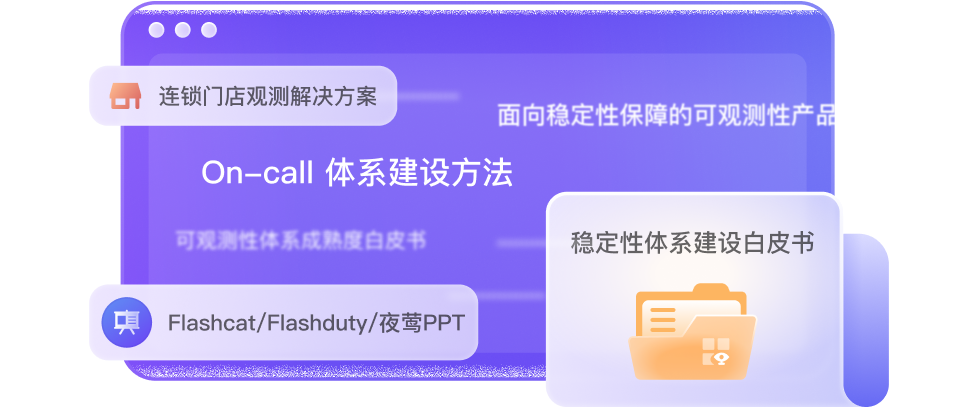夜莺-Nightingale
夜莺V7
项目介绍
功能概览
API
FAQ
部署升级


数据接入


告警管理


数据查看


功能介绍


告警管理


通知管理


通知规则介绍
阿里云短信
Relabel 事件处理
Event Drop 事件处理
Event Update 事件处理
Callback 事件处理
Script 事件处理
Label Enrich 事件处理
AI Summary 事件处理
仪表盘


数据源


时序指标


日志分析


告警自愈


基础设施


集成中心


人员组织


系统配置


夜莺V6
项目介绍
架构介绍
快速开始

黄埔营

安装部署

升级

采集器


使用手册


API


数据库表结构


users
notify_tpl
board
users
target
target
user_group
user_group_member
task_tpl
task_tpl_host
task_record
sso_config
role
role_operation
recording_rule
notify_tpl
metric_view
datasource
configs
chart_share
busi_group
busi_group_member
builtin_cate
builtin_cate
builtin_cate
builtin_cate
board
board_payload
alerting_engines
alert_subscribe
alert_rule
alert_mute
alert_his_event
alert_cur_event
alert_aggr_view
FAQ


转发数据给多个时序库
机器列表数据异常
数据流图
监控数据时有时无
查询原始监控数据
快捷视图详解
告警自愈模块使用
仪表盘里只展示我的机器
仪表盘里图表数据缺失
设置自定义告警通知方式
target_up指标的问题
夜莺可以监控 x 么
夜莺告警常见问题排查思路
告警和恢复的判断逻辑
容量规划问题
connection refused
登录与认证
数据采集器Categraf
日志写到`/var/log/messages`
告警规则&告警模板如何引用变量
采集到的数据是字符串怎么处理
管理员密码忘记了
制作大盘如何添加图片
添加loki数据源报错
v6小版本升级有什么 sql 要执行吗
机器列表有展示,但采集数据查询不到
n9e 启动异常报错
n9e集群部署配置修改
推送 Promethus 报错 OOO
机器列表怎么忽略云资源
告警规则仅在本业务组生效失败
categraf 启动 oracle 插件报错
告警自愈不生效
n9e查询时序库EOF报错
手动编译项目报错
promQL 使用函数标签信息丢失
内存使用率+可用率不等于100
夜莺仪表盘有哪些内置变量
categraf配置文件支持热加载吗
导入 Grafana 仪表盘无效数据源
如何查看报错消息
采集器-Categraf
插件配置
插件综述
基础指标采集插件
netstat采集插件
netstat_filter采集插件
procstat采集插件
http_response
mysql插件
redis插件
snmp插件
ipmi采集插件
dns_query插件
dcgm插件
nvidia_smi插件
cadvisor采集插件
systemd采集插件
smart采集插件
postgresql插件
mongodb插件
elasticsearch采集插件
exec采集插件
emqx采集插件
阿里云指标采集插件
Zabbix 指标转换插件
cloudwatch指标采集插件
google cloud指标采集插件
mtail插件
prometheus采集插件
页面配置采集插件
Flashcat 企业版
开源生态
Telegraf
Prometheus
版权声明
第1章:天降奇兵


第2章:探索PromQL


开篇
理解时间序列
Metrics类型
初识PromQL
PromQL操作符
PromQL聚合操作
PromQL内置函数
在HTTP API中使用PromQL
最佳实践:4个黄金指标和USE方法
小结
第3章:Prometheus告警处理


开篇
Prometheus告警简介
自定义Prometheus告警规则
部署Alertmanager
Alertmanager配置概述
基于标签的告警处理路由
使用Receiver接收告警信息

告警模板详解
屏蔽告警通知
使用Recoding Rules优化性能
小结

第4章:Exporter详解


第5章:数据与可视化


第6章:集群与高可用


第7章:Prometheus服务发现


第8章:监控Kubernetes


开篇
初识Kubernetes
在Kubernetes下部署Prometheus
Kubernetes下的服务发现
使用Prometheus监控Kubernetes集群
基于Prometheus的弹性伸缩
小结
第9章:Prometheus Operator

参考资料

S.M.A.R.T采集插件
应用场景
关注硬盘可靠性的场景
采集原理
利用smart工具, 采集硬盘指标。 依赖工具smartmontools 和 nvme-cli 。
关于smart的介绍
S.M.A.R.T. (Self-Monitoring, Analysis and Reporting Technology) storage
devices. SMART is a monitoring system included in computer hard disk drives
(HDDs) and solid-state drives (SSDs) that detects and reports on various
indicators of drive reliability, with the intent of enabling the anticipation of
hardware failures. See smartmontools (<https://www.smartmontools.org/>).
关于nvme的介绍
NVM Express® (NVMe®) technology has enabled a robust set of industry-standard
software, drivers, and management tools that have been developed for storage.
The tool to manage NVMe SSDs in Linux is called NVMe Command Line Interface (NVMe-CLI).
See nvme (<https://nvmexpress.org/open-source-nvme-management-utility-nvme-command-line-interface-nvme-cli/>)
获取指标的主要命令,替换<nocheck>和<device>为你的参数
smartctl --info --attributes --health -n <nocheck> --format=brief <device>
获取attribute, 依赖nvme-cli,命令如下
nvme smart-log-add <device>
or
nvme smart-log <device> #新版本
配置
本地采集需要免密sudo
[[instances]]
## categraf默认会自动探测smartctl路径
# path_smartctl = "/usr/bin/smartctl"
## 默认自动探测nvme-cli路径
# path_nvme = "/usr/bin/nvme"
## 指定探测nvme磁盘厂商的attribute
## ["auto-on"] - automatically find and enable additional vendor specific disk info
## ["vendor1", "vendor2", ...] - e.g. "Intel" enable additional Intel specific disk info
# enable_extensions = ["auto-on"]
# 免密sudo, 不配置为true几乎获取不到多少指标
# use_sudo = true
## 磁盘检查模式
## Skip checking disks in this power mode. Defaults to
## "standby" 如果磁盘停止运行则不做磁盘检查
## 见 smartctl的 --nocheck 参数
## smartctl version 5.41 and 5.42 have faulty detection of
## power mode and might require changing this value to
## "never" depending on your disks.
# nocheck = "standby"
## 获取 S.M.A.R.T. attribute 指标和细节信息
# attributes = true
## Optionally specify devices to exclude from reporting if disks auto-discovery is performed.
## 不需要采集的磁盘
# excludes = [ "/dev/pass6" ]
## 指定需要采集的磁盘和类型
## 不配置,默认通过(smartctl --scan and smartctl --scan -d nvme) 扫描
# devices = [ "/dev/ada0 -d atacam", "/dev/nvme0"]
# devices = ["dev/nvme0 -d nvme", "/dev/nvme0"]
## 扫描超时时间
timeout = "30s"
## 并发调用smartctl 和 nvme-cli
## 默认情况下是通过不同的协程(goroutine) 分别调用smartctl 和 nvme-clis获取磁盘信息
## 但是像RAID 有访问限制的场景下,需要设置为 sequential
## 可用选项: concurrent, sequential
# read_method = "concurrent"
采集的指标
指标样例
smart_attribute_critical_warning agent_hostname=1.2.3.4 device=nvme0 model=INTEL_SSDPE2KX040T8 name=Critical_Warning serial_no=PHLJ830200CH4P0DGN 0
smart_attribute_temperature_celsius agent_hostname=1.2.3.4 device=nvme0 id=194 model=INTEL_SSDPE2KX040T8 name=Temperature_Celsius serial_no=PHLJ830200CH4P0DGN 53
smart_attribute_data_units_read agent_hostname=1.2.3.4 device=nvme0 model=INTEL_SSDPE2KX040T8 name=Data_Units_Read serial_no=PHLJ830200CH4P0DGN 16012020
smart_attribute_data_units_written agent_hostname=1.2.3.4 device=nvme0 model=INTEL_SSDPE2KX040T8 name=Data_Units_Written serial_no=PHLJ830200CH4P0DGN 24069427
smart_device_health_ok agent_hostname=1.2.3.4 device=nvme0 model=INTEL_SSDPE2KX040T8 serial_no=PHLJ830200CH4P0DGN 1
smart_device_temp_c agent_hostname=1.2.3.4 device=nvme0 model=INTEL_SSDPE2KX040T8 serial_no=PHLJ830200CH4P0DGN 53









 联系我们
联系我们